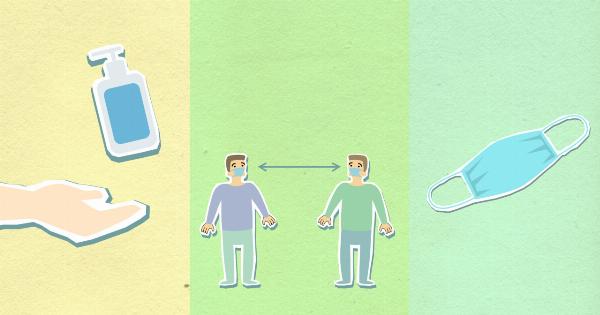Hand tremors are involuntary movements of the hands that can be rhythmic or non-rhythmic. Non-Parkinsonian hand tremors don’t follow a regular pattern and can be difficult to diagnose.
In this article, we will explore different types of non-Parkinsonian hand tremors and how they can be identified through images.
Essential Tremors
Essential tremors are the most common non-Parkinsonian hand tremors. They are usually symmetrical and affect both hands equally. Essential tremors are often seen in the hands while performing simple tasks like holding a glass of water or writing.
They can also affect the head, voice, and legs. The tremor is typically rhythmic and worsens with movement and stress.
 .
.
Cerebellar Tremors
Cerebellar tremors are caused by damage to the cerebellum, a part of the brain that controls movement coordination. These tremors occur during voluntary movement, such as reaching for an object or writing.
Cerebellar tremors differ from essential tremors in that they have a low frequency and moderate amplitude. They are often accompanied by other symptoms such as unsteady gait and dizziness.
 .
.
Dystonic Tremors
Dystonic tremors are associated with muscle contractions. The tremors can occur at rest or during movement and can be either focal or generalized.
Focal dystonic tremors affect a specific body part, while generalized dystonic tremors affect multiple parts of the body. These tremors are often seen in people with dystonia, a condition that causes involuntary muscle contractions.
 .
.
Orthostatic Tremors
Orthostatic tremors occur when standing or walking and disappear when sitting or lying down. These tremors are rare and affect more women than men.
Orthostatic tremors are characterized by a rhythmic movement in the legs or trunk that can cause unsteadiness and lead to falls. These tremors can also cause anxiety and discomfort.
 .
.
Psychogenic Tremors
Psychogenic tremors are caused by psychological stress or trauma. These tremors can affect multiple parts of the body and can mimic essential tremors or Parkinson’s disease. Psychogenic tremors are often seen in people with anxiety or depression.
They can be difficult to diagnose and treat because they are associated with psychological factors.
 .
.
Drug-Induced Tremors
Drug-induced tremors are caused by certain medications or drugs. These tremors can be either rest tremors or action tremors. Rest tremors occur when the person is resting, while action tremors occur during movement.
Common medications that cause tremors include antidepressants, anti-seizure drugs, and corticosteroids. The tremors usually disappear after the medication is discontinued.
 .
.
Palatal Tremors
Palatal tremors are rare and affect the muscles in the back of the throat. These tremors can cause a clicking or fluttering sound in the ear or a sensation of something moving in the ear.
Palatal tremors are often associated with neurological conditions such as multiple sclerosis, stroke, or brainstem lesions.
 .
.
Physiological Tremors
Physiological tremors are normal tremors that occur in everyone. These tremors can be seen in the fingers and hands while holding a posture or position against gravity. The tremors can be increased by fatigue, stress, or caffeine.
Physiological tremors are benign and don’t require treatment.
 .
.
Rubral Tremors
Rubral tremors are caused by damage to the red nucleus in the brainstem. These tremors are often seen in people with multiple sclerosis, stroke, or brain tumors.
Rubral tremors are characterized by irregular and jerky movements that can affect one or both sides of the body. The tremors can be worsened by movement and stress.
 .
.
Reticular Tremors
Reticular tremors are a type of muscle tremor that occurs when the muscle is in a relaxed state. These tremors can interfere with speech and swallowing. They are often seen in people with progressive supranuclear palsy, a rare neurological disorder.
Reticular tremors are difficult to treat and can be disabling.
 .
.
Conclusion
Non-Parkinsonian hand tremors can be caused by a variety of factors. Essential tremors are the most common type of non-Parkinsonian tremor, while other types of tremors are rare and can be difficult to diagnose.
Identifying the type of tremor is important to determine the appropriate treatment. By examining images and understanding the characteristics of each type of tremor, doctors and patients can better recognize and treat non-Parkinsonian hand tremors.































